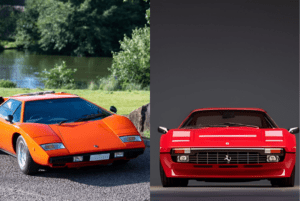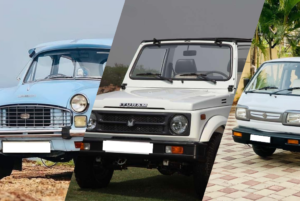
In the automotive world, few cars have left as indelible a mark as the Jaguar E-Type. It’s not just a sports car; it’s an icon, a symbol of timeless elegance and unparalleled performance. When it made its grand entrance in 1961 at the Geneva Auto Salon, it didn’t merely capture attention; it rewrote the very rules of what a car could be.
In an era where 70 mph was considered best for a family vehicle, the E-Type promised an astounding 150 mph. It was a promise that enchanted even Enzo Ferrari, who declared it the most beautiful car in the world. This is the captivating story of a car that transcended its time and continues to shape the automotive world today.

You’ve probably heard of the E-Type, but how much do you know about its backstory and all the amazing stuff it achieved? Let’s dive into the world of the E-Type, or as some folks call it, the XK-E.
Picture this: It’s the post-World War II era, and Jaguar is facing some challenges. There’s a steel shortage, but these folks don’t back down. In 1945, they decided it was time for a name makeover. Out with the old, in with the new – they swapped “S. S. Cars Ltd.” for something way more optimistic: “Jaguar.” It all started with the SS 2½ Litre Saloon, which had that classy feline emblem.
Fast forward a bit, and that leaping cat logo found its way onto the Mark V’s radiator grille. That’s when the Jaguar XK engine came into the scene – a beast with a dual overhead camshaft straight-six. It was the engine that kicked off Jaguar’s power game.

An Icon In The Making
In 1948, the XK120 was launched, and boy, it was a showstopper. Thanks to that XK engine and some sleek aerodynamics, it was the first car of its time to hit 120 MPH. Not too shabby for the late 40s, right? Hollywood’s very own Clark Gable got the first drophead coupé, and Jaguar was on the fast track to dominating the racetracks, partly thanks to their wartime aircraft know-how.
Speaking of racetracks, Le Mans in 1950 was a big deal. The XK120 gave everyone a lesson in lightweight design and aerodynamics. In 1951, the Jaguar C-Type hit the stage and won Le Mans on its first try, then repeated the feat in 1953. They even brought disc brakes into the automotive world, something borrowed from aircraft tech.
Next up was the D-Type, a real evolution. This beauty came with a sheet alloy monocoque chassis. In 1954, it hit Le Mans, but things didn’t go as planned. Even in 1955, a tragic accident took the spotlight.

Enter the E-Type
In 1956, Jaguar’s racing team decided it was time for something new. The Le Mans champ D-Type and the old-school XK140 needed a refresh. Enter the E-Type, the roadster prototype E1A in 1957, with a monocoque chassis and a 2.4-liter XK straight-six engine. They tested it extensively, but in the end, this one hit the cutting room floor.
But hold on, there’s more! The E2A prototype was a different story. This one was a racing beast, with a steel monocoque chassis, aluminum body, and a 3.0-liter XK engine. It made its debut in 1960 just in time for Le Mans, where it faced some real tests.

Cross the pond to the U.S., and the E2A was a hit. This experience gave Jaguar’s engineers some sweet insights for more tinkering.
Taking the lessons from the E1A and E2A, the production E-Type was born. It had a central steel monocoque and a tubular steel front subframe, which made it a whole lot lighter than its predecessor, the XK150.
This car was all about that independent suspension. The front was taken from the XK150, and the rear had some transverse lower links and dual coil springs with Koni shock absorbers.
You wouldn’t believe it, but it had four power-assisted disc brakes – a rare sight back then. However, it had a unique rear brake setup with the brakes on each side of the differential housing, which was cool but not so practical for racing pit stops.
Now, get this, it rolled on 15x5K front wheels and 15x5K½ rear wheels with some fancy Dunlop tires. But that’s just the start of the story.
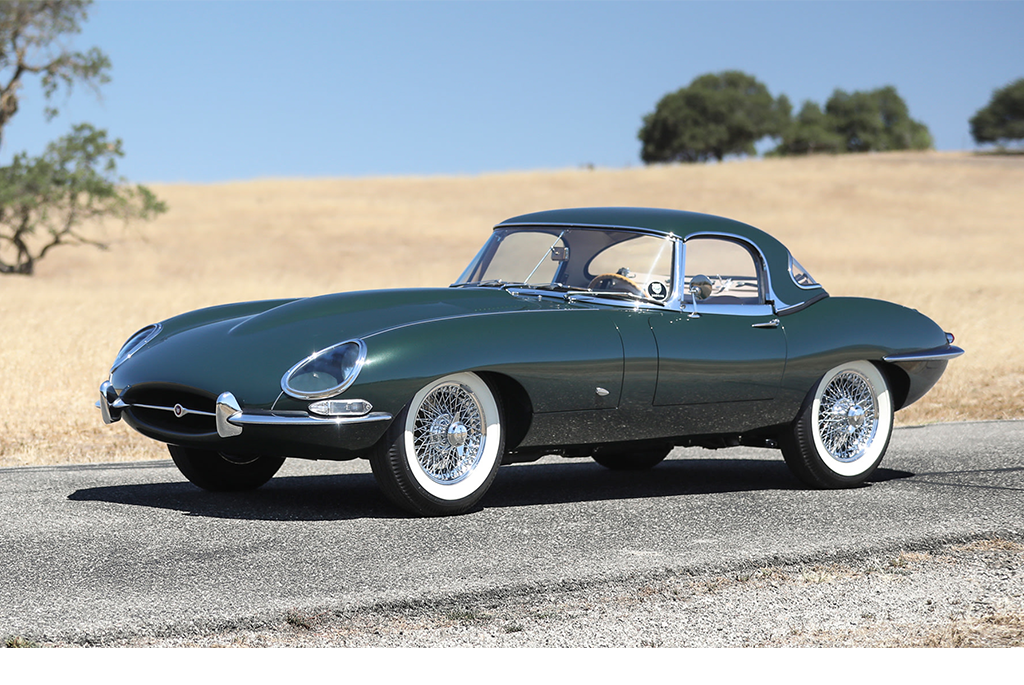
The Grand Debut: E-Type Takes the Stage
Fast forward to 1961, and the E-Type was ready for its big debut, shining bright at the Geneva Motor Show. Fun fact, it almost missed the show because the prototype was stuck in the UK. But thanks to some last-minute heroics from Jaguar’s PR expert Bob Berry, they got the car to Geneva just in the nick of time.
And, oh boy, it was worth it. The E-Type wowed everyone, including none other than Enzo Ferrari, the man behind some legendary cars. He called it the most beautiful car in the world. High praise from a fierce competitor!
People were lining up for test drives. Sir William Lyons had to call in the legendary test driver Norman Dewis to get another E-Type to Geneva. Dewis embarked on an epic eleven-hour drive, maintaining 68mph all the way, without the luxury of motorways. That’s commitment!
So, there you have it, the grand debut of a legend. Between 1961 and 1974, the E-Type went through several versions and sold like hotcakes – around 70,000 of them, including about 24,000 roadsters. Not bad for a technologically advanced European sports car!
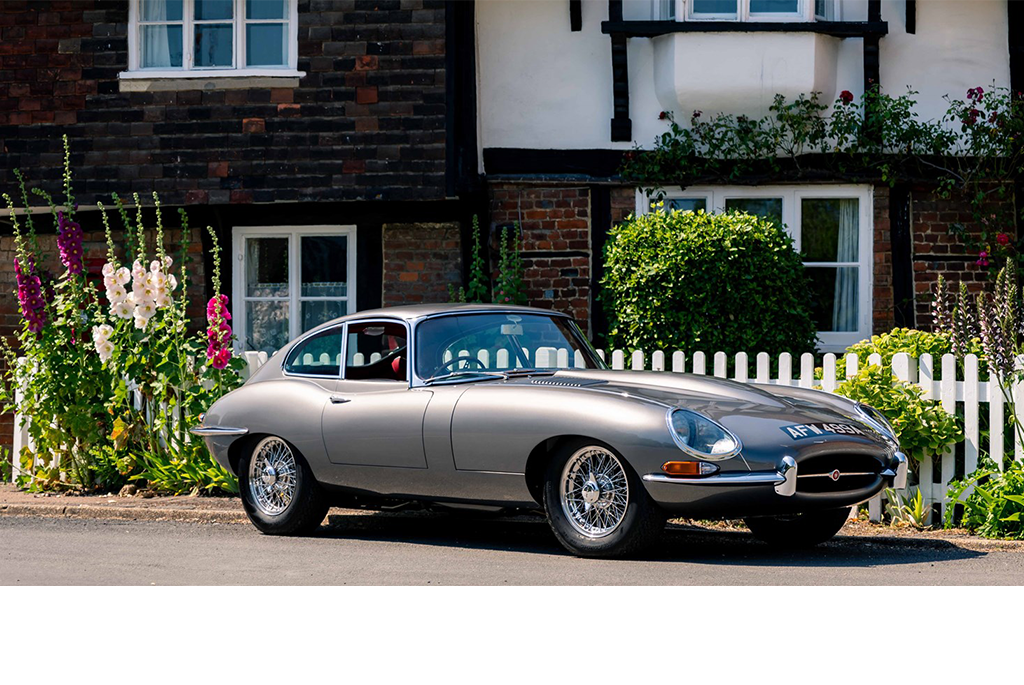
Series 1: Speed and Comfort
The early E-Types were all about speed. The first 500 Series 1 cars even had flat floor panels for that extra legroom. But later, they realized people wanted a bit more comfort, so they tweaked the design.
In the early years, they packed a 3.8-liter XK straight-six engine, complete with triple SU HD8 carburetors and a 4-speed Moss gearbox. But in the late ‘60s, they swapped that 3.8-liter engine for a 4.2-liter one with a fully synchromesh 4-speed transmission. It had the same power but more torque and even better brakes.
In 1966, they introduced a 2+2 version for those who wanted more space, kind of like a grand tourer. They even offered an optional 3-speed automatic transmission for those who preferred a more laid-back ride.
As for the headlights, they had to tweak them for the American market to meet safety regulations, which gave birth to the Series 1 ½. It was a transitional phase with some cool changes, like plastic rocker switches replacing the toggle switches. Oh, and don’t forget the hexagonal knock-off nuts!
Now, the Series 1 ½ wasn’t just a looker. It had a bit less power due to those new carbs, but it was still a blast to drive.
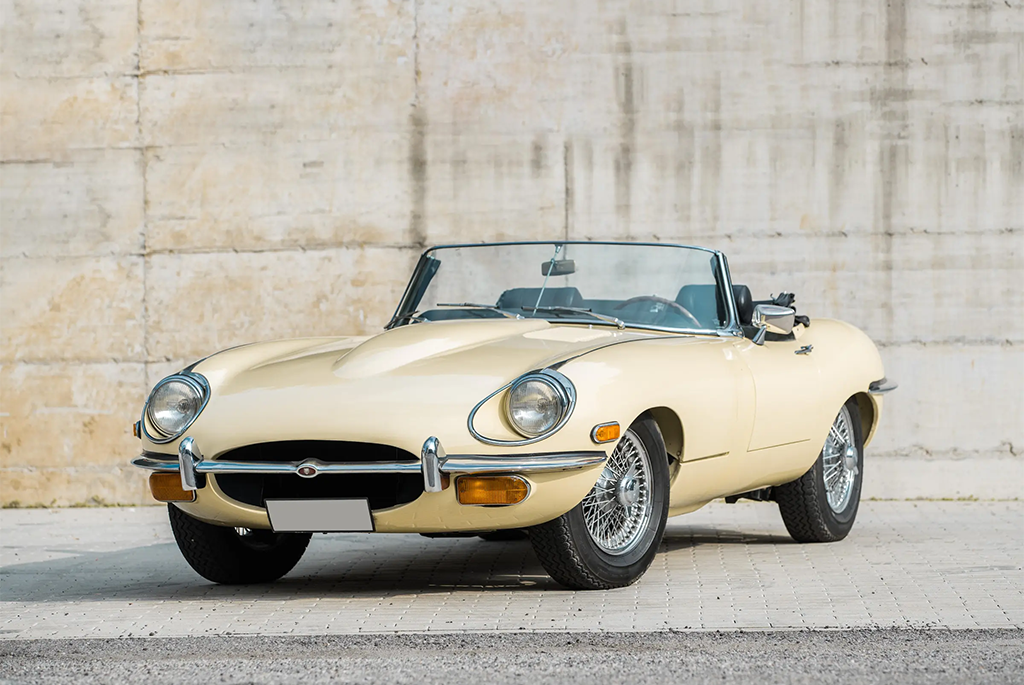
Series 2: Safety and Comfort Come First
The Series 2, introduced in 1968, was all about safety. It had a larger grille opening, better side indicators, and relocated rear lights for enhanced visibility. They even offered optional air conditioning and power steering for those who liked to cruise in style. The wire wheels came wrapped in Dunlop SP Sport CB73 radial tires, a bold move back then.
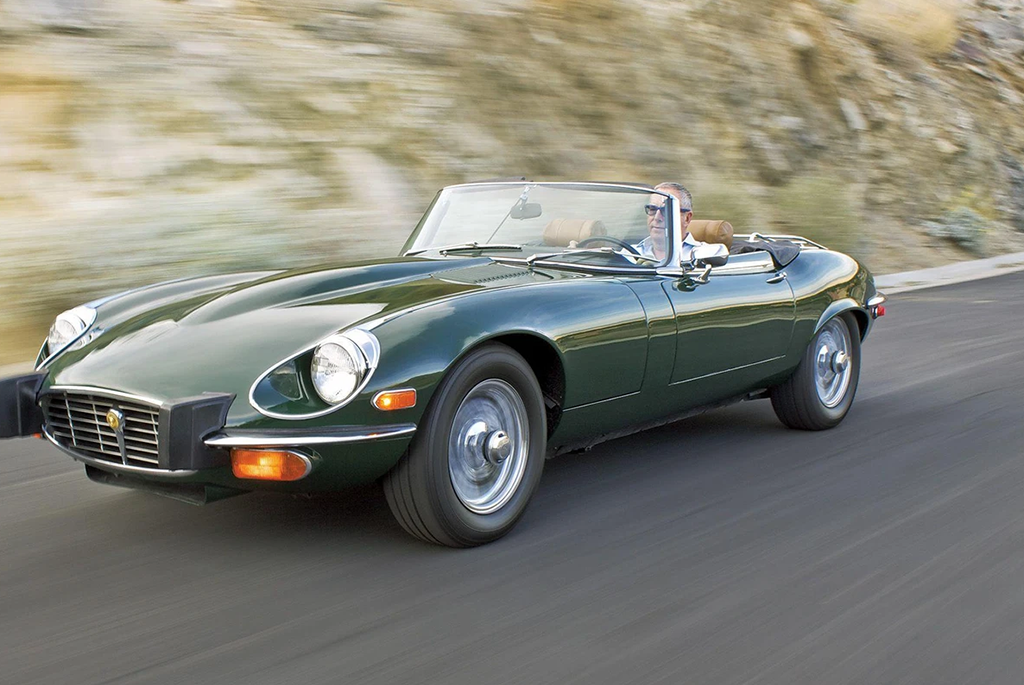
Series 3: The V12 Era
By 1971, the Series 3 rolled in, bringing some big changes. They said goodbye to the old XK straight-six engine and introduced a V12 engine, making it more of a grand tourer. It had a 2+2 configuration for more space, and power steering was now standard.
This V12 engine had quite a history, derived from Jaguar’s racing program. It had around 270 horsepower and 399 lb-ft of torque, which was pretty impressive. You could get it
with a manual or an automatic transmission, whatever suits your style.
Of course, they had to beef up the brakes and add some safety bumpers for the U.S. market. You could spot a Series 3 by its slatted front grille and wider wheel arches.

E-Type: A Legend Lives On
The E-Type wasn’t just a car; it was a cultural icon. British celebs like George Best, George Harrison, and Elton John loved it. It even caught the eye of collectors like Jerry Seinfeld and Jay Leno. And guess what? Prince Harry and Meghan Markle drove off in an electric E-Type on their wedding day. Talk about timeless!
E-Type in the Movies: A Star on Screen
The E-Type had its fair share of Hollywood moments. It appeared in classics like “How To Steal a Million” with Audrey Hepburn and “Vanishing Point,” where it added some countercultural vibes. It’s been a real star on and off the screen.

Racing for Glory: From Track to Circuit
While the E-Type started as a race car, it got so popular that it didn’t need to prove itself on the track. Still, some brave E-Types raced in both big and small events. Graham Hill, Roy Salvadori, Mike Parks, and Bruce McLaren were some of the racing legends who tamed the E-Type’s power.
But here’s the twist: Jaguar wanted to make it even faster, so they created the E-Type Lightweight with thinner steel, aluminum panels, and perspex glass. It was a lean, mean racing machine, with 350 horsepower and a killer look.
Later on, they built the E-Type Lightweight roadster, and two of them turned into coupés. It was all about lightweight, aerodynamics, and speed, and they nailed it.

Racin’ in the USA: The American Journey
The E-Type didn’t just race in Europe; it crossed the pond to the U.S. In the SCCA championship, an E-Type roadster took the stage, thanks to the Group 44 team. They scored big wins in 1975 and 1976, and it was all about that power-to-weight ratio.
One of the coolest E-Types was the Low Drag Coupe, also known as “The Cat That Outfoxed the Hare.” This beast had a V12 engine with 500 horsepower, and it was a track demon.

Modern E-Types: Classic Meets Electric
Even though production ended in 1974, the E-Type’s charm lived on. Jaguar knew this and started making authentic E-Type parts to keep the legend going.
In 2014, they brought back the “Lightweight E-Types,” completing the original 18-car plan. These cars were just like the ‘60s originals, racing specs and all.
And they didn’t stop there. In 2017, they unveiled the Jaguar E-Type Zero, an all-electric E-Type roadster. It had the classic look but a modern, clean drive. It was a true fusion of the old and the new.
In 2020, they went even further, restoring Series 1 E-Types to their factory glory. Each one got a meticulous makeover, ensuring they met the highest standards of quality and authenticity.
Is Jaguar hinting at the relaunch of the icon? Perhaps! Here is our humble appeal to Jag “please launch the new E type in the EV avatar while maintaining the classic body lines and interiors” after all who doesn’t love a great Retromod.

